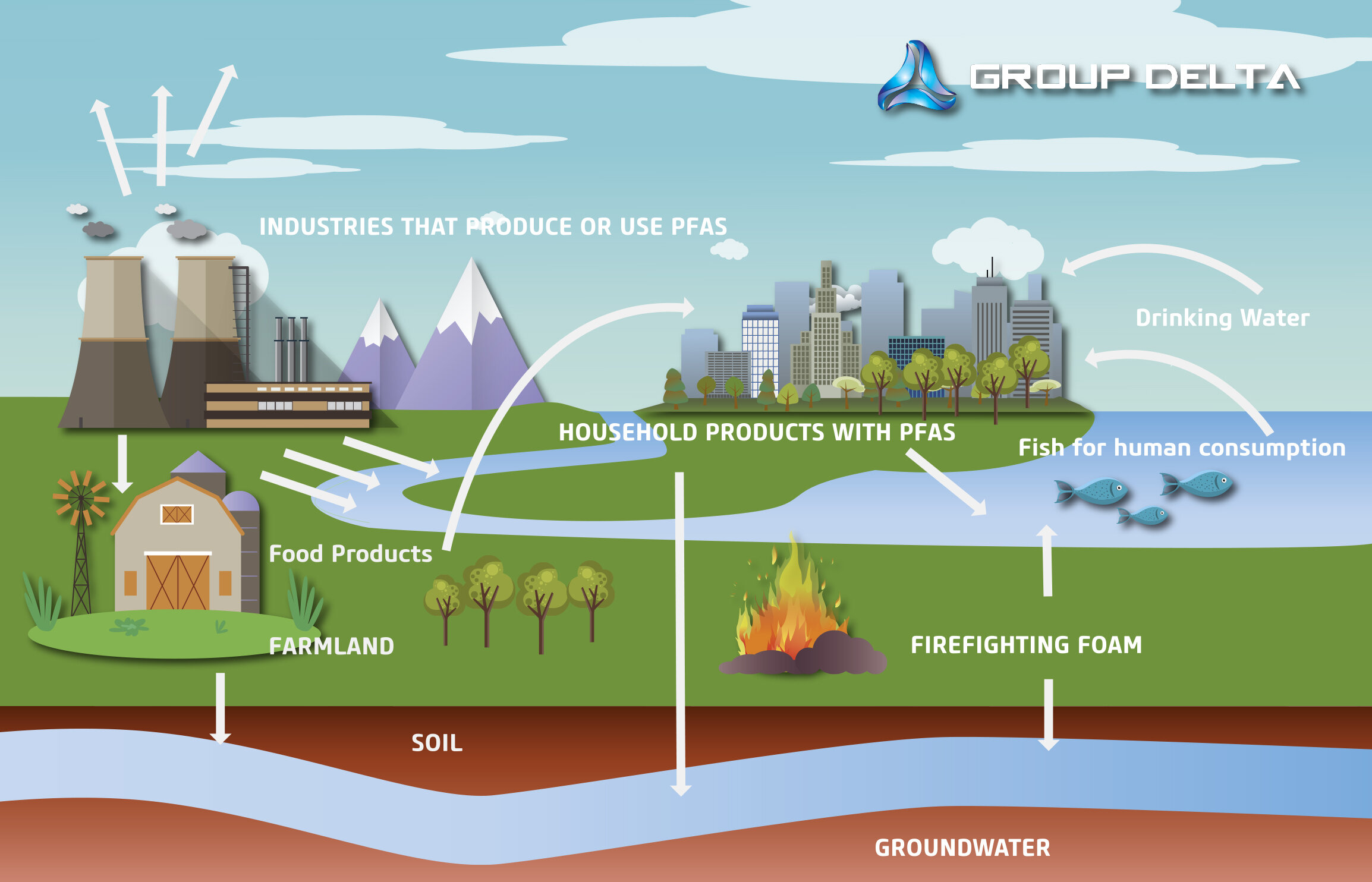
The Forever Chemical
Per- and polyfluoroalkyl substances (PFAS) belong to a group of man-made toxic chemicals used in the United States since the 1940s and can be found in many consumer products as well as in our soil, air, and water. PFAS are resistant to heat, water, and oil. PFAS have been used extensively in surface coating and protectant formulations due to their unique ability to reduce the surface tension of liquids.
According to the EPA, there is evidence that PFAS can lead to adverse health effects. These synthetic chemicals take an extended period of time to break down in nature, giving them the nickname ‘Forever Chemicals’. In addition, these chemicals bio-accumulate over time in our bodies, environment, and water supply.
PFAS are found in water, air, fish, and soil at locations across the nation and the globe. PFAS can be introduced into the body by eating or drinking contaminated food or liquid (including water), breathing in or touching products treated with PFAS, such as carpets or clothing. [1]
Studies have shown that exposure to some PFAS can be potentially toxic in the parts per trillion (ppt) to parts per quadrillion (ppq) range.
Current peer-reviewed scientific studies have shown that exposure to certain levels of PFAS may lead to:
Reproductive effects such as decreased fertility or increased high blood pressure in pregnant women.
Developmental effects or delays in children, including low birth weight, accelerated puberty, bone variations, or behavioral changes.
Increased risk of some cancers, including prostate, kidney, and testicular cancers.
Reduced ability of the body’s immune system to fight infections, including reduced vaccine response.
Interference with the body’s natural hormones.
Increased cholesterol levels and/or risk of obesity.



